Keeping yourself safe on the road starts with the simple action of wearing your seatbelt. Any driver who has been behind the wheel of a vehicle manufactured after 1966 should be familiar with car seatbelts, as this is when they became mandatory in the USA . It was another decade before they were mandatory here in Canada, with legislation being . What drivers may not be familiar with are the different types and varieties of seatbelts!
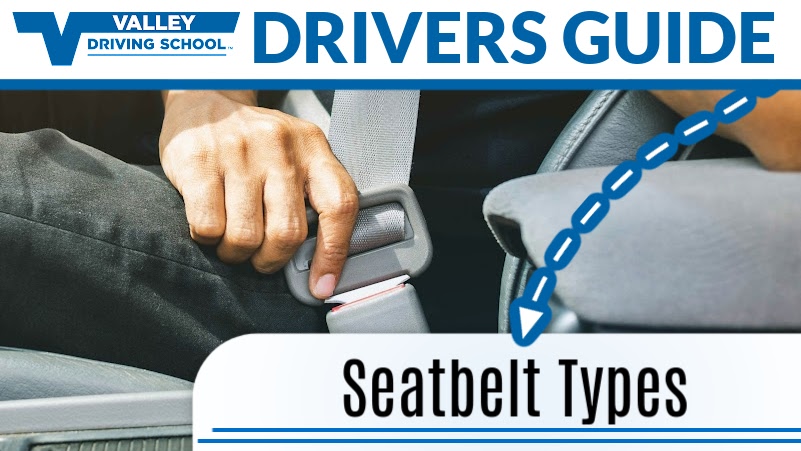
Let’s find out what these seat belt varieties are, where you can find them, and how to properly and safely use them.
Two-point/Lap Seatbelt
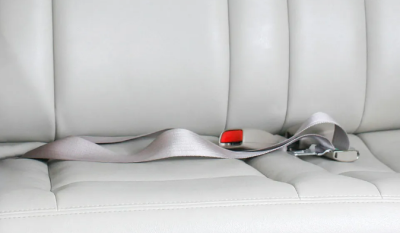
These seatbelts are commonly seen in middle seats, older vehicle front seats, and buses. Outside of vehicle use, lap belts can be found most commonly in airplanes. Two-point seatbelts use two end-points and are pulled across the lap to buckle. Seatbelts are designed to spread the force of a collision across the stronger parts of the body, focusing on bones rather than organs, so the purpose of a lap belt is to spread that force to the pelvic bones rather than the stomach. For this reason, these seatbelts should rest snuggly on the hips and stretch across the upper thighs rather than stretched across the stomach.
Three-point/Shoulder Seatbelt
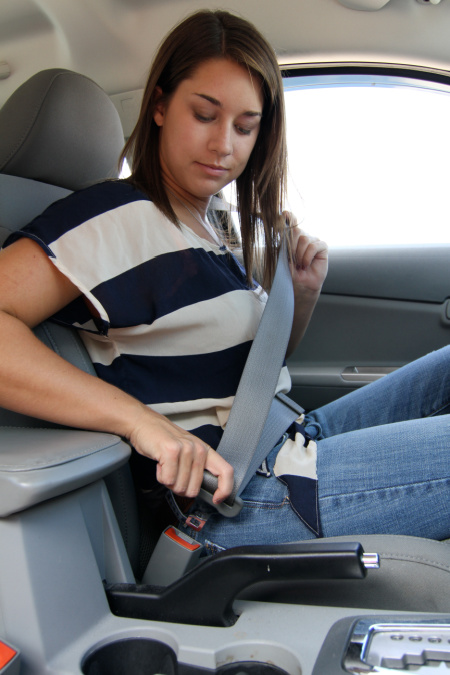
Shoulder seatbelts are what most people envision when they think “seatbelt”. The three-point seatbelt has two end-points anchored to the vehicle, beside the seat, and the third point is anchored to the vehicle where the buckle sits on the opposite side of the seat. This belt reaches across the shoulder and across the lap, securing at the same point. They are used in most modern day vehicles and, like the lap belt, distributes the force of an impact. Shoulder seatbelts provide more safety than a lap belt, as it distributes the force across a wider area, lessening the force at each point.
Five-point/Harness Seatbelt
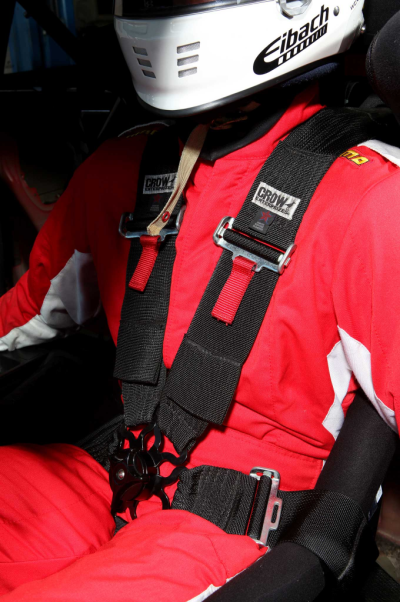
Five-point seatbelts are commonly found in child car seats, high-performance racings cars, and some recreational motorsport vehicles. This belt has two shoulder straps, two hip straps, and a fifth strap that sits between the upper thighs. A harness seatbelt offers superior protection compared to three-point seatbelts and this is why it is used for child car seats and other vehicles, like race cars and recreational motorsport vehicles, that have a potentially higher accident risk than a regular vehicle. The shoulder straps cross over the chest and shoulders, connecting to the seat or car seat frame on either side. The hip straps extend across the lower body, attaching to the seat or car seat frame near the hips.
Lastly, the lower strap secures the harness between the legs, preventing the occupant from slipping out from under the shoulder straps during a collision.

Seven-point Seatbelt

The seven-point seatbelt is another type of belt used in high-performance race cars. The key components of a seven-point seatbelt include two shoulder straps, two lap belts, two thigh belts, and a sub-belt. The shoulder straps cross over the shoulders and chest, connecting to the seat or car seat frame on either side. The lap belts secure the occupant's lower body, extending across the hips and attaching to the seat or car seat frame near the sides. The thigh belts add an additional layer of security, wrapping around the thighs to prevent upward movement. Finally, the sub-belt, also known as the crotch strap, secures the harness between the legs.
These seatbelts are not commonly found in standard passenger vehicles due to their specialized nature and the unique requirements of racing environments, but can be found in vehicles where the passenger has limited mobility or upper body strength due to an injury or disability.
Automatic Seatbelt
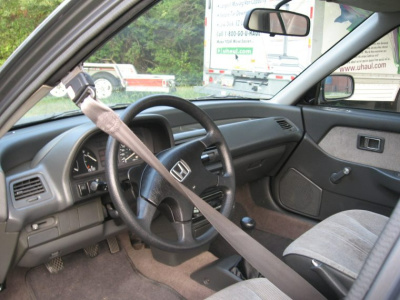
Automatic seatbelts were introduced in the late 1970’s and became a common staple throughout the 1980’s and 1990’s. These seatbelts were anchored to the inside side of the seat, and the shoulder belt was affixed to a track that was mounted on the car frame. When the vehicle was turned on, the belt would move along the track, moving the shoulder belt across the driver or passenger’s chest.
These belts were originally thought of as the safest solution to drivers not wearing their seatbelts at all, but it did not take long before it was realized they had the opposite effect. Drivers would allow the automatic seatbelt to come across their chest, but would fail to secure the lap belt and this was found to be more dangerous than not wearing a seatbelt at all.
Inflatable Seatbelt
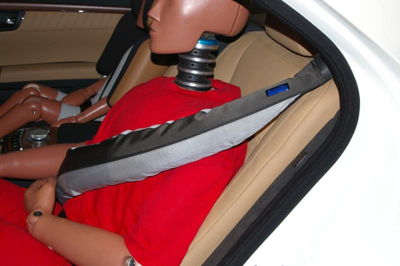
Inflatable seatbelts are an optional feature for some vehicles such as Ford SUV’s, Mercedes Benz S-class, and Lincoln models. These seatbelts have airbag-like components integrated into the seatbelt itself, that rapidly expands and inflates with compressed gas at the time of a collision. These belts build on the safety of standard seatbelts and helps to spread the force of impacts even further. Inflatable seatbelts are most commonly used for back seat seatbelts that are less likely to have the same airbag protection as the front seat, although they can be found on front seat seatbelts as well.
LATCH / UAS Seatbelts
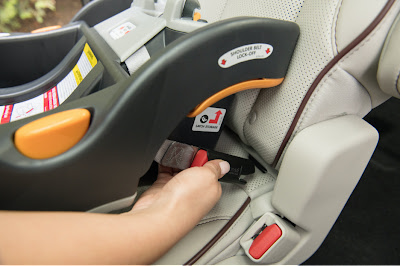
Lower Anchors and Tethers for Children, or LATCH, is a standardized system of anchors designed to improve the installation of child car seats. This same system is also known as UAS, or Universal Anchorage System. The UAS consists of metal bars, known as anchors, that are anchored to the lower part of rear seats and straps, known as tethers, that are located on the back of rear seats. Child car seats come equipped with hooks and straps that attach to the anchor and tether, providing the safest way of attaching child car seats to a vehicle seat. The UAS is used instead of strapping child car seats into the vehicle using the two- or three-point seatbelts that vehicles are equipped with.
Vehicles manufactured after 2002 are all required to be equipped with a UAS. There are some instances where you are not able to use a UAS, such as in older vehicles or when using an infant seat without the removable base. When using a UAS, make sure to read through the vehicle’s owners manual to ensure it has been installed correctly or you can also take your installed child car seat to any police or fire station to have the installation checked.
–
Whether you’re planning to only use a two- or three-point seatbelt, or if you’re planning to jump into a seven-point belt behind the wheel of a high-performance race car, you’re now equipped to operate any of them! Buckle up and stay safe, no matter how you’re getting around.
